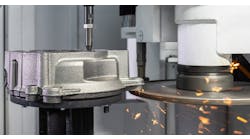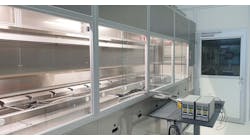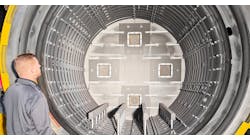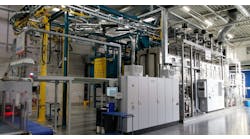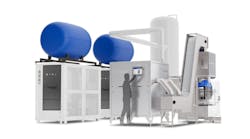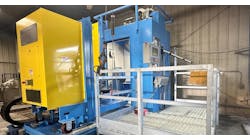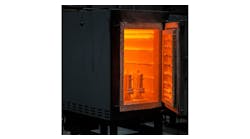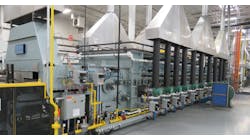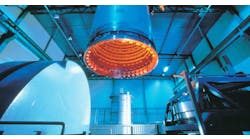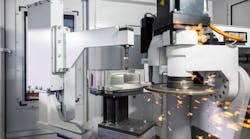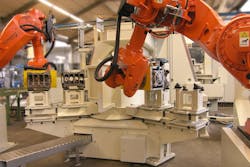The metalcasting industry is enjoying a transformative era thanks to the advent of automation technologies. Grinding and finishing operations, often considered the bottlenecks in manufacturing workflows, are being revolutionized by advanced systems like robotic and CNC grinding. These innovations are reshaping the landscape by reducing labor dependency, enhancing product quality, and optimizing operational efficiency.
In the realm of automated grinding, CNC and robotic solutions have emerged as leading technologies. Each option has its unique strengths and considerations, making it essential for foundries to assess their specific needs when selecting a solution.
Both systems can be seamlessly integrated into existing workflows, and deliver consistent and optimal performance while maintaining high standards of safety and quality. Importantly, they demonstrate an immediate ROI and, with today’s user-friendly technologies, enable operators to be trained and fully operational within days.
Precision and consistency - CNC systems offer unparalleled accuracy and repeatability, making them ideal for foundries focused on high-volume production. Their multi-axis controls and automated tool changes streamline complex grinding tasks, ensuring tight tolerances and consistent surface finishes.
Flexibility and scalability - Robotic grinding systems excel in handling diverse geometries and materials. Equipped with advanced sensors and vision systems, these robots adapt to variations in casting designs, delivering exceptional precision and efficiency. Their scalability makes them suitable for foundries with evolving production demands.
Integrated CNC and robotic systems have created hybrid solutions that leverage the strengths of both technologies. These systems offer a blend of precision, adaptability, and efficiency, making them a compelling choice for modern foundries. By combining CNC's rigidity and robotics' flexibility, these solutions address complex casting requirements while optimizing cycle times and quality.
All automated grinding systems minimize human error, ensuring uniformity across production runs. Advanced inspection technologies, integrated into many systems, further enhance quality by identifying defects in real-time.
While the initial investment in grinding automation can be substantial, the long-term savings in labor costs, reduced scrap rates, and improved productivity deliver a high return on investment (ROI.)
Automation reduces the need for manual intervention in hazardous grinding tasks, significantly lowering the risk of workplace injuries and operator fatigue. Modern automated systems are designed to scale with production needs. Whether a foundry is expanding its capacity or diversifying its product range, automation provides the flexibility to adapt seamlessly.
Outgoing automated inspection to ensure the highest quality is the hallmark of any automated grinding system. Using lasers, these systems inspect each part to guarantee quality, and reduce expensive scrap.
There are also a number of game-changing technologies that are altering the dynamics of the cleaning room in regard to automated grinding. Most of these technologies involve newer control systems, that are both easier to operate and importantly do not require reprogramming with each wheel change.
Older grinding systems were not easily configured to add-on to other automated systems, such as robots. Now, using Profinet communication protocol, this is no longer difficult to do. Profinet is an open industrial Ethernet solution designed to exchange data between controllers and devices in an industrial automation setting.
Newer automated grinders are also using CAAT, or Computer Assisted Audit Techniques. CAAT uses computer software to analyze large amounts of data during an audit versus a traditional audit, which is a labor-intensive manual review of smaller samples. CAAT significantly speeds up the audit process by automating data extraction and analysis, reducing time spent on manual tasks so that operators can identify problem areas more effectively.
Choosing between robotic and CNC grinding solutions is a pivotal decision for any foundry. Any foundry needs a comprehensive evaluation framework, which assess:
- Production volume, High-volume operations benefit from CNC systems, while robotic solutions cater to diverse casting portfolios.
- Casting complexity, Intricate geometries often favor robotic systems, whereas CNC machines excel in repetitive tasks with tight tolerances.
- Budget and ROI. Detailed cost-benefit analyses ensure alignment with financial goals and operational demands.
- Infrastructure. Readiness of existing facilities for seamless integration of automation technologies.
Automated grinding is more than a labor-saving tool for foundries. Incorporating grinding automation into a cleaning room enhances throughput and product quality by enabling efficient outgoing inspections. Modern systems are easier to program, train, and use for data analysis, transforming a cleaning room from a labor-intensive bottleneck into a streamlined control center for finishing operations.
Determining the best automated or semi-automated solution—whether a CNC or robotic system—for your foundry requires a careful analysis of your current production needs and future growth plans.
